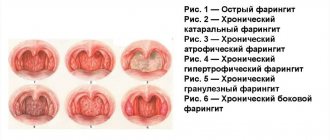Influenza and ARVI belong to a group of common infectious diseases of viral origin. They are characterized by predominant damage to the respiratory system and have somewhat similar symptoms. Both pathologies are life-threatening. If not treated in a timely manner, they can cause severe complications and are often the cause of epidemics.
How to distinguish coronavirus from ARVI, colds and flu
COVID-19 is an infectious disease caused by a coronavirus recently discovered in China. At an early stage, the disease is difficult to distinguish from a common cold. But the discoveries of foreign specialists and surveys of people who have already recovered from the disease made it possible to obtain data on specific symptoms that make it possible to differentiate it from other ailments.
The main difference between coronavirus and influenza and ARVI is the incubation period (the time from infection to the appearance of the first signs). Respiratory viruses and influenza make themselves felt within 1-4 days. On average, their incubation period is 2-3 days.
The coronavirus takes longer to reproduce in the body. Its incubation period can reach up to 14 days. Severe symptoms in most patients are noticeable already on day 5, but may appear much later.
Theoretically, it can be assumed when the virus infection occurred (travel on public transport, communication with a person who was feeling unwell). It is necessary to count the days when the first clinical symptoms appeared, and therefore come to a conclusion what kind of disease the patient had to face. Early onset of illness signals influenza and acute respiratory infections, late symptoms indicate COVID-19.
Important! The difference between coronavirus and ARVI and influenza is the length of the incubation period.
Traditional methods
In most cases, the treatment of colds is not complete without the use of traditional methods. There are a large number of products whose effectiveness has been proven in practice.
Here are a few of them:
- Medicine against influenza. You need to take a large onion, cut it in half and inhale the essential vapors for 5 minutes. Repeat the procedure at least three times a day.
- Garlic tincture against viral infection. To prepare it, take 100 g of garlic, chop it, pour in 250 ml of high-quality vodka and leave to steep for 24 hours. Directions for use: spread two drops of the product on the tongue and swallow. The course of treatment is 5 days.
- Immunity booster. You should take 3 tbsp. l. pistachio kernels, grind them to a powder and pour 1.5 cups of boiling water. Take 3 tbsp. l. 4 times a day, regardless of meals.
- Motherwort herb for the flu. To obtain a therapeutic effect, it is recommended to take 1 g of powdered herb 4 times a day, washed down with boiled water.
- Anti-inflammatory decoction based on medicinal herbs. You should take equal parts of beech herb, sage and medicinal chamomile and mix. Brew the mixture at the rate of 1 tsp. per glass of boiling water. Drink 3-4 glasses a day.
- Cherry decoction to reduce fever. Pour 100 g of dried cherries into 0.5 liters of water and evaporate over low heat under a lid until 1/3 of the volume disappears. Take 2 tbsp at high temperatures. l.
Vitamin tea with lemon and honey will help you get back on your feet faster after the flu.
What other colds occur during an epidemic?
In the autumn-spring period, children and adults may experience various diseases transmitted by airborne droplets.
In addition to acute respiratory infections, acute respiratory viral infections, and influenza, it can be:
- tonsillitis - inflammation of the tonsils;
- pharyngitis – inflammation of the laryngeal mucosa;
- adenoviral infection - damage to the respiratory tract and visual organs;
- metapneumovirus infection affecting the respiratory tract;
- parainfluenza – affecting the larynx;
- rhinovirus is a disease that occurs with a severe runny nose and low fever.
According to the Ministry of Health, the difference between colds and mild coronavirus is insignificant. Ailments are manifested by fever, cough, weakness, runny nose, pain in muscles and joints, cephalalgia, diarrhea. However, the severity of symptoms varies significantly.
Temperature increase
With COVID-19, the thermometer rises from 37.3 and above. Flu is accompanied by a temperature of 38 degrees. It rises suddenly, and the patient cannot determine exactly when the fever began. With ARVI, elevated temperature practically does not occur.
Cough
In children and adults, Covid is almost always accompanied by a dry, debilitating cough, as the infection affects the respiratory organs. Flu is also accompanied by a cough, and ARVI most often causes not a dry, but a productive (wet) cough.
Weakness and general malaise
Loss of strength accompanies viral diseases. However, with ARVI, weakness is not always noted by a person. Another standard symptom for everyone is aching muscles and joints.
Runny nose, sore throat and head, diarrhea
With coronavirus, signs of rhinitis are rarely observed. There is mainly nasal congestion in the bridge of the nose and loss of smell. Flu and respiratory infections quite often provoke mucous discharge from the nasal passages. At first they are transparent, and later they turn yellowish-green.
Cephalgia with Covid is sometimes present. Some patients note that their headaches are very severe, just like with the flu. With ARVI, complaints about this symptom are rarely received.
The throat does not hurt much with coronavirus and flu. Only soreness is observed, but ARVI is regularly accompanied by pain, redness, and swelling of the tissues.
People with influenza and Covid do not always experience diarrhea. With ARVI, there may be an upset bowel movement, but this symptom is rare, often in children.
Diagnostics
Photo: i2.wp.com
ARVI is a fairly common diagnosis; each of us has encountered this disease at least once in our lives, and many more than once. In most cases, the diagnosis is made on the basis of appropriate symptoms indicating the possibility of acute respiratory viral infection. Considering that the virus is easily transmitted by sneezing, coughing, talking at close range, also through dishes and clothing, it is necessary to find out whether there has been contact with a sick person over the past 3 to 4 days. The month in which the person went to the doctor with relevant complaints is also taken into account, since there is a seasonality of the disease.
Based on the clinic, it is extremely difficult to identify the specific type of virus from the ARVI group that was the cause of the disease. In the practice of a doctor, it is possible to make an accurate diagnosis only for influenza and adenovirus infection. In all other cases, ARVI is diagnosed.
There are also laboratory diagnostic methods. One of the most modern methods is PCR. The essence of the method is to identify viral antigens in the epithelium of the upper respiratory tract. The epithelium of the nasal cavity is most often used, since in this case there are no difficulties in collecting the material. Diagnostic methods such as ELISA and RIF have now lost their relevance.
Since respiratory viruses have a damaging effect on the mucous membrane of the respiratory tract, the development of bacterial complications is not uncommon. To rule out pneumonia, a consultation with a pulmonologist and an x-ray of the lungs are prescribed. To examine the ENT organs, a consultation with an otolaryngologist is scheduled, who in turn performs rhinoscopy, pharyngoscopy and otoscopy.
Specific symptoms of coronavirus
Rospotrebnadzor has published the main signs of coronavirus, which are most often observed in seriously ill people. This is a dry cough and chest pain. The cough can be prolonged, not stopping for an hour or more. Moreover, each new attack is felt stronger than the previous one.
On days 5-7, another alarming symptom occurs - shortness of breath and difficulty breathing. On the 8th day and later, with a particularly complex form of the disease, fluid may accumulate in the lungs, which leads to breathing problems. Such patients are connected to a ventilator to provide artificial ventilation of the lungs.
The main symptoms unique to coronavirus:
- unproductive lingering cough;
- increase in body temperature;
- soreness in muscles and joints;
- sore throat;
- difficulty breathing, shortness of breath, feeling of congestion in the chest;
- diarrhea syndrome, nausea.
Otolaryngologists notice another specific symptom that allows them to distinguish Covid from ARVI and regular flu - loss of smell and taste. However, even with a normal runny nose, a person may experience such changes.
Recently, Italian experts identified an additional symptom of coronavirus, which was observed in every fifth hospitalized patient - a rash on the skin of the toes, similar to smallpox or urticaria. However, it is more often found in children. She disappears without a trace after recovery.
Worrying symptoms of covid
In 80% of cases, coronavirus infection is asymptomatic or mild, similar to a seasonal cold. 20% develop a life-threatening complication - viral pneumonia, characterized by rapid progression and the development of pulmonary failure.
Therefore, it is extremely important to pay attention to warning signs:
- body temperature above 38.5 degrees, lasting longer than 3 days;
- tightness, feeling of lack of air in the chest, pressing pain;
- frequency of breaths (more than 20 per minute);
- rapid heartbeat (more than 100 per minute);
- pressure drop to 90 mm Hg. Art. (and below);
- blood oxygen saturation is less than 94% (for self-monitoring, many people began to purchase pulse oximeters);
- loss of consciousness, fainting due to lack of oxygen in the body;
- blue lips
If severe shortness of breath, tightness in the chest, or difficulty breathing occurs against the background of an acute respiratory viral infection, you must urgently call an ambulance or go to the nearest intensive care unit for hospitalization and connection to a ventilator.
Important! The main difference from colds and acute respiratory infections in coronavirus is the absence of sneezing, runny nose, flatulence, and severe digestive upset. The patient's skin turns pale, his throat may hurt, and his chest may become congested.
Signs of ARVI
Acute respiratory viral infections affect the respiratory organs (nose, sinuses, larynx, bronchi). The mucous membrane of the eyes also suffers. The main signs of the disease are nasal congestion, sneezing, lacrimation, redness of the sclera. The temperature can rise to 38 C, but not in all cases.
Other signs of ARVI include:
- soreness, redness, pain in the throat;
- lacrimation, pain in the eyes, photophobia;
- general malaise, loss of strength, drowsiness, insomnia;
- enlarged lymph nodes;
- aches in muscles and joints;
- increased sweating, chills;
- attacks of cephalalgia;
- lack of appetite.
In children, the disease is accompanied by crying, anxiety, refusal to eat, elevated body temperature, and weight loss.
Important! The difference between ARVI and coronavirus and influenza is low fever, profuse runny nose, watery eyes, and sneezing. The disease develops within 2-3 days after infection.
Treatment
Photo: zdorovia.net.ua
During the period of rising temperature, it is recommended to adhere to bed rest. The room in which the patient is located must be regularly ventilated so that the virus does not constantly circulate in the room. Close people living in the same room as the sick person should use a mask. An important point in therapy is the drinking regime. It is recommended to drink up to 3–4 liters of liquid per day. Preference is given to alkaline mineral water, as well as juices and fruit drinks. You can use juices that contain a high concentration of vitamin C, such as orange, cranberry or lingonberry. The fact is that vitamin C increases immunity, thereby giving the body strength in the fight against the virus. Warm teas, for example, with raspberries, viburnum, lemon or honey, also relieve the condition.
A properly selected diet contributes to a speedy recovery. Food should be light, high-calorie, containing large amounts of vitamins and microelements. To increase the level of vitamin C in the body, you should give preference to fruits and vegetables such as kiwi, orange, grapefruit, lemon, and green bell pepper. Vitamin A is found in spinach, carrots, pumpkin, peaches and apricots. To saturate your body with vitamin E, you need to remember about nuts, for example, cashews, walnuts, and pine. Various oils (olive, sunflower, rapeseed) and liver are also rich in vitamin E. In addition, it is important not to forget about fermented milk products (cottage cheese, kefir, fermented baked milk, yogurt, etc.), as they help normalize the intestinal microflora, which is necessary in maintaining immunity. It is better to cook meat products boiled and pureed to facilitate digestion. The diet should also contain various porridges, for example, oatmeal, millet, buckwheat, rice, since porridges contain not only a wide range of vitamins, but also a lot of microelements necessary for the functioning of the body. It is advisable to avoid fatty, spicy, smoked and fried foods, and it is also recommended to give up alcohol and smoking.
Medicines that have a destructive effect on the virus are called antiviral drugs.
In addition, it is necessary to eliminate a number of symptoms that accompany a patient with ARVI. Elevated body temperature is reduced with the help of nonsteroidal anti-inflammatory drugs (NSAIDs). However, it is worth recalling that not every temperature should be brought down by medications. At temperatures up to 38 °C, the body itself copes well with its condition and needs the help of medications only in cases where the accompanying symptoms are extremely pronounced. In case of severe nasal congestion, which makes breathing difficult, vasoconstrictor drops are prescribed. But do not forget that this product is recommended to be used for no more than 7 days, since long-term use leads to atrophic changes in the nasal mucosa. Most often, vasoconstrictor drops are prescribed for 3 days, since in most cases, nasal congestion goes away during this period. In case of severe cough, antitussive drugs are prescribed, the action of which is aimed at reducing irritation of the mucous membrane of the upper respiratory tract. Expectorants are used to thin and remove mucus.
Considering that the virus has a damaging effect on the mucous membrane of the respiratory tract, bacterial complications are possible. In such cases, antibacterial agents are prescribed. The type of bacterium that caused a particular disease is first clarified (using bacteriological research) in order to select the appropriate antibiotic that can destroy the harmful microorganism. Until this point, antibacterial therapy is prescribed empirically, that is, until information is obtained about the causative agent of the infectious process and its sensitivity to antibiotics.
Flu symptoms
It is not difficult to distinguish the flu from acute respiratory viral infections and colds. When the body is infected with influenza A and B viruses, health suddenly deteriorates. In the morning a person may feel great, but in the evening he may develop a fever. Common symptoms of the disease include fever, chills, fatigue, attacks of cephalalgia, cough with sore throat, muscle aches, and rhinitis.
The duration of the disease depends on many factors, ranging from the strength of the immune system to the presence of chronic diseases. The main difference between this disease and covid is the increase in symptoms. If a severe headache, aches in the body and joints subside after 3-5 days, then a severe coronavirus infection only intensifies, requiring urgent hospitalization of the patient.
Important! The flu often affects children and adolescents aged 1-14 years. This age category accounts for 37% of all cases of the disease.
Causes of colds in children
There is not a single child who does not catch a cold at least once a year. Some children suffer from 5-6 or more colds per year. The reasons for this may be both the age-related characteristics of the children’s body and some nuances of their lifestyle.
It is known that resistance to viral infections is not an innate quality of a child, but is developed as the immune system matures. In a significant proportion of children, a significant level of maturation of protective forces is achieved by the age of three. In some children (15-20%), the maturation of the immune system occurs with some delay - by 5-7 years. These are the so-called non-kindergarten children. If such a child begins to attend a children's group prematurely, then he easily and often gets sick and gets sick until he suffers the entire range of viral infections circulating in this group. Such children should be protected (isolated) from sick family members and, if possible, refrain from enrolling the child in kindergarten for a year or two.
However, along with age-related characteristics of immunity, the living conditions that we, adults, create for our child are most directly related to a child’s morbidity. And we are talking not only about the possibility of hypothermia or the child being in drafts. Strange as it may seem, it is in so-called “dysfunctional families” that children rarely get colds. They are not afraid of drafts; in cold autumn they can go to school without a jacket, wearing torn boots, and in winter they can walk without mittens.
Children suffer from colds much more often, whom mothers and grandmothers strenuously protect from cold. A child who is wrapped in warm clothes, without taking into account that during a walk he will run and will certainly sweat, is at increased risk of illness.
Children who rarely go outside and are not accustomed to temperature changes, cold winds, and high humidity get sick no less often. Such a child, as a rule, gets a cold in the most seemingly harmless situation, not to mention cases when he suddenly gets his feet wet.
Complications of diseases
If the disease is neglected and the necessary measures are not taken to combat the infection, the symptoms can become chronic. Sinusitis, rhinitis, laryngitis, otitis media, sinusitis, and tonsillitis often develop against the background of colds and flu. Untreated tonsillitis (tonsillitis) can lead to the onset of rheumatism and nephritis.
The patient may also experience other complications of viral illnesses:
- meningoencephalitis, polyradiculoneuritis;
- conjunctivitis, barley;
- myocarditis, pericarditis;
- pneumonia, bronchitis.
In patients, chronic diseases worsen, internal organs and the brain suffer.
Prognosis in every case
Forecasts are individual in each case. Even a common cold can cause serious complications in an adult or child, which is the problem. It is known that coronavirus causes respiratory problems in older people (over 60 years old) and chronically ill people (diabetics, hypertensives). They are more prone to complications and the development of a serious course of the disease.
The following are susceptible to severe influenza infection affecting the nervous, respiratory, and cardiac systems:
- pregnant women;
- Small children;
- persons suffering from autoimmune diseases.
The mortality rate of COVID-19 is higher than that of seasonal influenza. However, the true scale of mortality is still unknown.
Comparison of symptoms of coronavirus, influenza and ARVI table
Based on materials provided by WHO, you can make a comparative table with the main symptoms of colds, flu and coronavirus.
| Main symptoms | Flu | ARVI | Coronavirus |
| Temperature | Often | Sometimes | Often |
| General malaise | Often | Sometimes | Sometimes |
| Cough | Often (unproductive) | Minor (productive) | Often o (unproductive) |
| Sneezing | Absent | Often | Absent |
| Joint and muscle aches | Often | Often | Sometimes |
| Rhinitis | In some cases | Often | In some cases with loss of smell |
| Pain in the throat area | In some cases | Often | Rarely |
| Diarrheal syndrome | Rare in children | Sometimes | Sometimes in adults and children |
| Skin rash | Absent | Absent | In some cases, in the form of urticaria |
| Cephalgia | Often | Rarely | Sometimes with severe attacks |
| Shortness of breath, difficulty breathing | Absent | Absent | In severe cases with chest pain and congestion |










